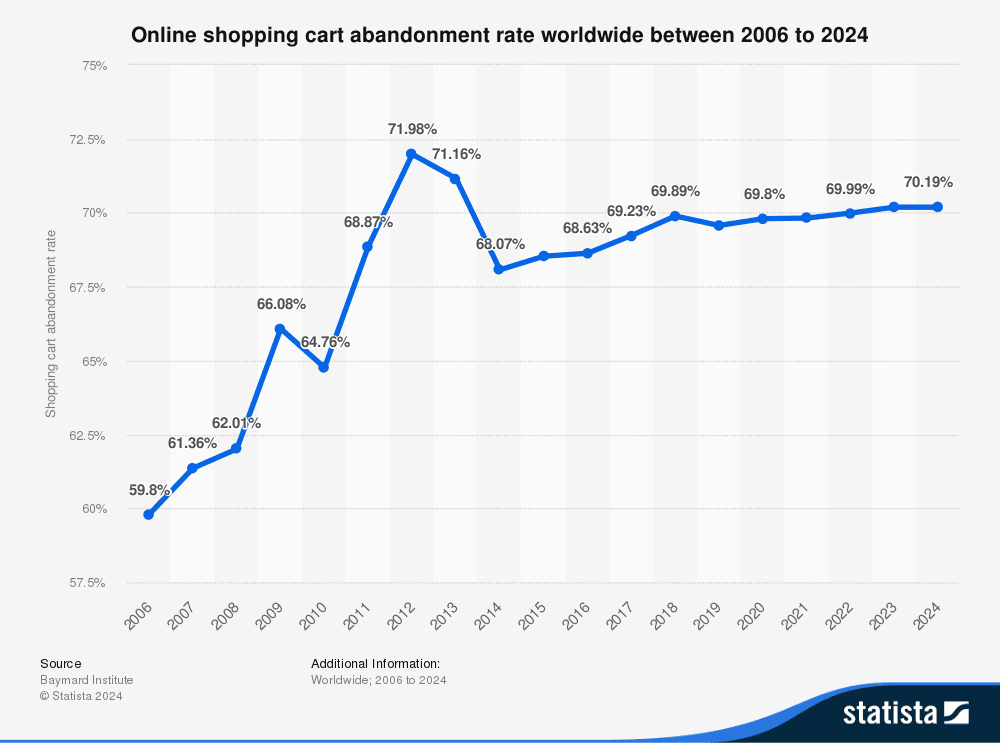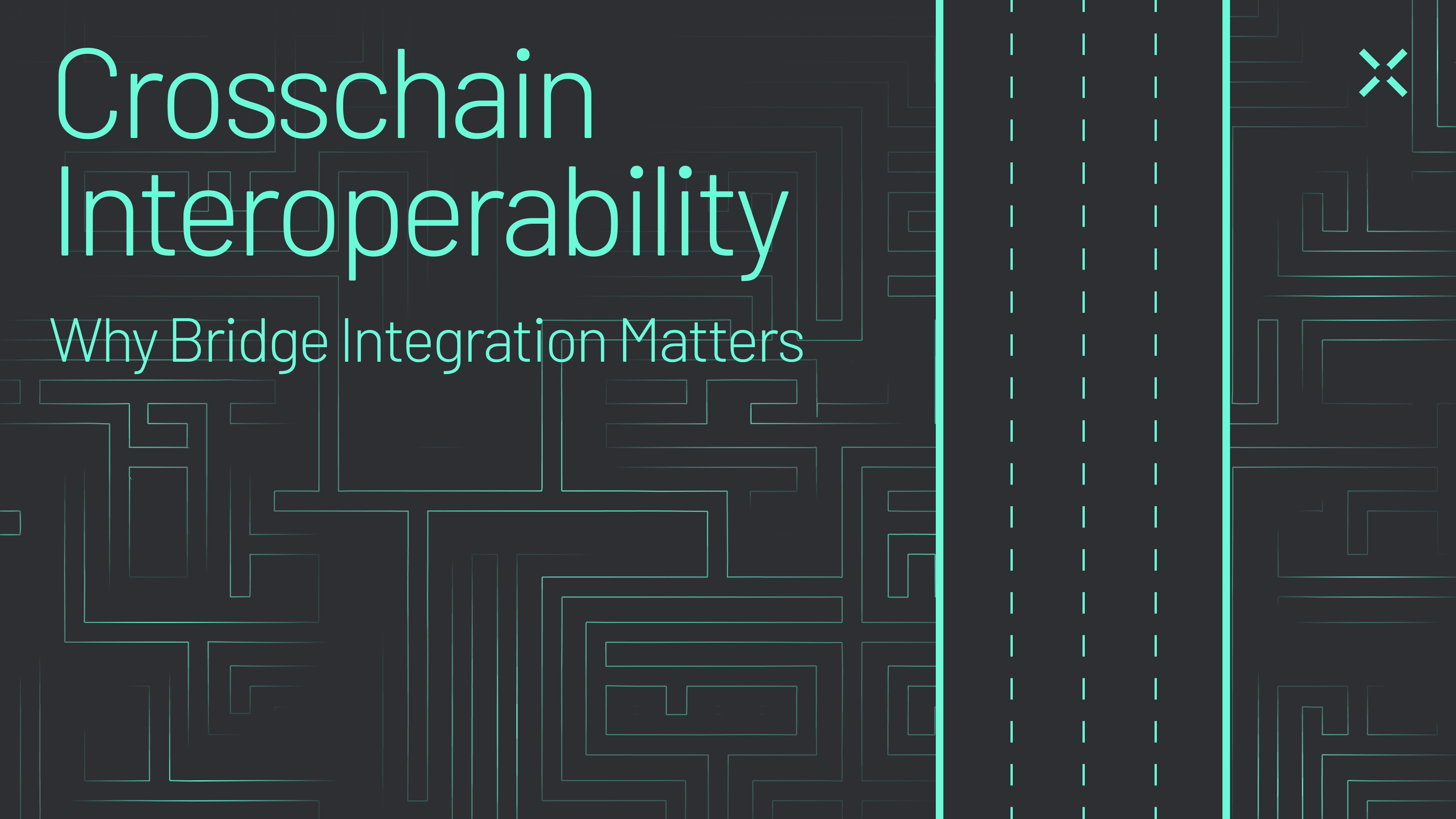In today's multichain DeFi landscape, user experience often breaks down at a crucial point: Before users can even interact with a dApp, they need to bridge their assets to the right chain.
Research shows that this extra step creates significant friction—in web2, even minor interruptions to user flow result in abandonment rates of up to 70%. In mobile apps, studies show that when users are forced to switch between applications, they frequently fail to return to complete their original tasks.
This means that by expecting users to leave your dApp and use a third-party bridge before they can start using your application, you're likely losing a significant portion of potential users before they ever experience what you have to offer.
The solution? Integrating a crypto bridge directly into your dApp. When users can bring their assets from any chain and interact with your application immediately—without first visiting a separate bridge—you remove a major barrier to adoption. In this model, users can focus on what matters: using your dApp's features, not managing crosschain logistics.
The Role of Crypto Bridges in DeFi
The role of a crypto bridge in DeFi is simple: it allows users to move their assets around at liberty, empowering them to be free from the confines of any one blockchain. Although actions vary greatly from user to user throughout different ecosystems, crypto bridging allows users to achieve outcomes like:
Lending or staking assets via high-yield platforms on Polygon or Optimism.
Bridge to Base to chase the hottest trends and narratives
Farming yields on chains like Arbitrum
To accomplish any of these actions from the Ethereum mainnet, users must be able to move assets across chains quickly and safely. Crypto bridges allow them to do this by empowering the seamless transfer of tokens from one blockchain to another.
This, in turn, unlocks opportunities in new ecosystems while avoiding slow, complex, and often costly alternatives like centralized exchanges. However, the benefits of crypto bridges go far beyond the end user. For developers, an improved user experience is also critical. Why?
A seamless crosschain experience can attract more users.
Lower friction can increase engagement, grow liquidity, and unlock new use cases.
Simplified asset management means happier, more loyal users.
Crypto bridges are enablers for developers. They allow DeFi participants to explore new chains and opportunities without having to leave your dApp. This expands platform reach and potential without creating additional complexity for users, allowing the crypto sphere to grow, uninhibited by challenges to operability.
Why DeFi Needs Crosschain Interoperability
Over the past decade, DeFi has grown far beyond its roots. However, this remarkable growth has created a paradox for developers. While the ecosystem has continued to balloon across an ever-increasing number of blockchains, this very expansion has fragmented liquidity and created silos.
For developers, these silos are more than just an inconvenience—they're a roadblock to user retention and dApp success.
Research on user behavior offers clear evidence: when users have to switch between applications to complete a task, they frequently abandon it entirely. A Royal Society study on app-switching behavior shows that forcing users to leave their current application creates a significant break in their intended action, with many never returning to complete their original task.
This is particularly critical for DeFi applications because users must move assets across chains before engaging with a dApp on their non-primary chain. Every time you force a user to leave your dApp for bridging, you create what usability researchers call a "switching cost" - an additional cognitive load that increases the likelihood of abandonment.
In e-commerce, similar breaks in user flow result in abandonment rates as high as 70%. While Web3 users may be more technically savvy, the fundamental human behaviors around friction and app switching remain the same.

Global online shopping cart abandonment rates between 2006 and 2024
In an increasingly competitive space, with the global DeFi market projected to surpass $177 billion by 2033, developers cannot afford to lose users to unnecessary steps. The interconnectivity challenge isn't just about technical capability—it's about capital efficiency and user retention.
By enabling seamless, crosschain interactions within a dApp, developers can eliminate these pain points that drive users away and offer a unified, frictionless experience.
Here's how integrated bridging through Across can directly benefit developers:
With crosschain functionality baked into your dApp, users can bring assets from any chain and start engaging immediately, removing barriers to entry.
Fewer steps mean fewer opportunities for user drop-off. A seamless experience keeps users engaged and loyal.
Integrated bridging empowers your users to maximize the utility of their assets across multiple chains, enhancing the overall value proposition of your dApp.
The Across Advantage for Developers
Building a multichain dApp no longer has to come with significant drawbacks for developers. Across’s Intent-based architecture makes it simple to integrate crosschain functionality while improving user experience.
Here’s how developers and businesses can benefit from Across.
Bridge Abstraction: Simplified UX
With Across, bridging becomes invisible. Across enables users to interact with dApps across multiple chains without manually bridging assets. Users can focus on their goals (staking, trading, or farming) instead of managing assets across chains.
Effortless Integration
Across offers an easy-to-implement solution that requires no heavy lifting. Our Developer Toolkit empowers any protocol to accept user transactions, irrespective of the origin or destination chains. Now, your users can interact with your protocol from wherever they are, with bridging seamlessly handled behind the scenes.
Unparalleled Speed
Speed makes or breaks user satisfaction. In web2, even minor delays lead to significant user drop-off - imagine how many users you lose when they have to leave your dApp entirely for a third-party bridge. Across addresses this head-on as the fastest bridging protocol in the space, completing crosschain transactions in 2 seconds. This market-leading speed enhances user experience and ensures that your users never miss out on time-sensitive opportunities like arbitrage.
Scale Your Reach, Not Your Complexity
Liquidity and scalability are the lifeblood of DeFi. With Across, developers can grow their dApp's reach and liquidity without increasing operational complexity. How? By integrating Across, dApps can tap into liquidity across supported EVM chains while maintaining their existing pools. At the same time, Across handles crosschain operations, allowing you to scale to new chains without increasing maintenance overhead.
Proven Success with Uniswap
As one of DeFi’s most prominent players, Uniswap’s integration with Across demonstrates how bridging can enhance liquidity and expand multichain capabilities for decentralized exchanges. By incorporating Across’s Intent-based bridging technology, Uniswap enables secure, 1-click transfers of ETH, stablecoins, and wBTC across nine EVM chains. This is also why Uniswap chose Across as its Day-1 bridge service on Unichain.
By streamlining crosschain interactions, Uniswap and Across enable a faster, seamless user experience while unlocking new opportunities for multichain liquidity and trading. These results showcase the tangible benefits of integrating Across: simplifying multichain development, driving user growth, and expanding liquidity across DeFi platforms to create a more interoperable DeFi.
The Future of DeFi Demands Seamless Experiences
As the DeFi ecosystem expands across multiple chains, the difference between successful and struggling dApps increasingly comes down to user experience. With research showing that up to 70% of users abandon processes when faced with extra steps, the most successful dApps will be those that eliminate friction points, starting with crosschain interactions.
By integrating Across directly into your dApp, you're not just adding a feature but removing a critical barrier between users and your application's core value. When users can bring their assets from any chain and start using your application immediately, you create a seamless experience that drives adoption and retention.
Major players like Uniswap have already recognized this shift and are integrating Across to enable one-click crosschain interactions for their users. More than 40 dApps now use Across, and we have over 50 protocols already supporting crosschain Intents; integrated bridging isn't just becoming a competitive advantage but an expectation.
Ready to eliminate crosschain friction from your dApp?
Check out our quick start guide and give your users the seamless DeFi experience they expect.

